Turning Heads (and Headtubes!) On a 19th Century Rudge
In the realm of collecting old things, a distinction is generally made between the vintage and the antique - the latter typically defined as being over 100 years old. When it comes to bicycles, my interest in this category has been limited to detached historical curiosity at best. It’s not that I don’t appreciate early two-wheeled machines. But oftentimes they are just too far removed from the bicycle as we know it today, for them to register in my brain as bikes and excite me on the same tactile, visceral level.
And that is pretty much how I felt during one of my visits to the Three Speed Hub, when proprietor Nick pointed conspiringly to a shadowy corner of his warehouse space and waited for my reaction. The enormous object that stood there resembled a bicycle in form, but at the same time deviated from a bicycle in subtle, yet significant and somewhat disconcerting ways.
“It’s a 19th Century Rudge!” Nick explained.
Ah, 19th century. I had guessed as much. I regarded the thing politely and asked some questions about its history, all the while longing to resume fondling the 1950s Oscar Egg that was more in keeping with my interests.
“And just wait till you see how it rides!” Nick continued.
I snapped out of my daze. “Oh, is it ridable?” I said, as casually as possible, while uttering a silent prayer that he wouldn’t attempt to convince me to try it out.
“It’s ridable all right, you’ve never seen anything like it! Here, let's take it outside and you can give it a go…”
“Why don’t you ride it and I’ll photograph you,” I offered instead, following apprehensively. Nick is of the breed of collectors who believe that all bikes - no matter how old, precious, or rare - ought to be ridden. In the past he had tried to coax me onto all sorts of machines, regardless of their size, decrepitude and trickiness to handle, with varying degrees of success. But I would rather forego this century-and-a-quarter old beast that was clearly several sizes too large for me.
Outside I had a closer look at the Rudge's construction. The dramatic, almost Pedersen-like slope of the top tube gives the bicycle an intimidating, oversized appearance. However, the saddle's position suggests it can be ridden by considerably smaller persons than it may at first appear. Another oddity I soon noticed is that the front wheel appeared to be smaller than the rear. I asked Nick about this. Initially he had assumed the front rim was a modern replacement, smaller than the rear because the previous owner could not get ahold of the period-appropriate size. However, he soon learned that the mismatched wheels are most likely correct and an original feature of this model - which is a rare 1892 Rudge Model D, nearly identical to the bicycle pictured here.
Another remarkable feature I soon observed was the monstrously thick chain.
Here it is next to an (already oversized by current standards) early 20th century roadster chain.
like so!
While foot rests on the fork blades facilitate the fixed geared "hipster coast."
And that is pretty much how I felt during one of my visits to the Three Speed Hub, when proprietor Nick pointed conspiringly to a shadowy corner of his warehouse space and waited for my reaction. The enormous object that stood there resembled a bicycle in form, but at the same time deviated from a bicycle in subtle, yet significant and somewhat disconcerting ways.
“It’s a 19th Century Rudge!” Nick explained.
Ah, 19th century. I had guessed as much. I regarded the thing politely and asked some questions about its history, all the while longing to resume fondling the 1950s Oscar Egg that was more in keeping with my interests.
“And just wait till you see how it rides!” Nick continued.
I snapped out of my daze. “Oh, is it ridable?” I said, as casually as possible, while uttering a silent prayer that he wouldn’t attempt to convince me to try it out.
“It’s ridable all right, you’ve never seen anything like it! Here, let's take it outside and you can give it a go…”
“Why don’t you ride it and I’ll photograph you,” I offered instead, following apprehensively. Nick is of the breed of collectors who believe that all bikes - no matter how old, precious, or rare - ought to be ridden. In the past he had tried to coax me onto all sorts of machines, regardless of their size, decrepitude and trickiness to handle, with varying degrees of success. But I would rather forego this century-and-a-quarter old beast that was clearly several sizes too large for me.
Outside I had a closer look at the Rudge's construction. The dramatic, almost Pedersen-like slope of the top tube gives the bicycle an intimidating, oversized appearance. However, the saddle's position suggests it can be ridden by considerably smaller persons than it may at first appear. Another oddity I soon noticed is that the front wheel appeared to be smaller than the rear. I asked Nick about this. Initially he had assumed the front rim was a modern replacement, smaller than the rear because the previous owner could not get ahold of the period-appropriate size. However, he soon learned that the mismatched wheels are most likely correct and an original feature of this model - which is a rare 1892 Rudge Model D, nearly identical to the bicycle pictured here.
Another remarkable feature I soon observed was the monstrously thick chain.
Here it is next to an (already oversized by current standards) early 20th century roadster chain.
And notice the flat teeth on the chainring, to accommodate it!
The reverse-setback seatpost beneath the sprung A. E. Wilby saddle is also interesting.
As is, of course, the front spoon brake.
There are foot pegs at the rear axel help mount the bike on the fly -
While foot rests on the fork blades facilitate the fixed geared "hipster coast."
But, all of this pales in comparison to what is by far the coolest feature of the 1892 Rudge: the headtube! Or, rather, the steerer! Or really both, since they are one and the same.
As you can see in the pictures, the stem, headtube and fork are all one unit, connected to the top and downtube with hinges, so that when the rider turns the handlebars the entire front end pivots.
In motion, this looks something like this. To the observer, it does look as if there is something different about the front end, even if you can't put into words what that is until someone points out the funky construction.
However, from the rider's perspective (yes, I was soon riding the bike myself!) the front end handling feels strangely normal - in an early roadsterish sort of way, which is to say, rather deliberate and delayed. It is only the visual aspect of things that takes getting used to - that is, seeing the headtube turn when the handlebars turn.
As far as sizing, I am still not sure what stature of rider this bicycle was meant to fit. Lowering the saddle nearly as far down as it would go allowed me to pedal comfortably. However, I could not clear even the lowest part of the top tube (which towered above saddle height, due to the slope), and had to lean the bike over considerably when standing over it.
In motion, the (surprisingly reasonably geared) fixed drivetrain picked up momentum with a steady eagerness, so that soon I was circling the industrial parking lot at speed - which the spoon brake actually helped shave off when it was time to stop (my feet did the rest). All in all, riding the 1892 Rudge with its pivoting front end, odd fit, differently sized wheels and monster chain, did not feel all that different from riding an early vintage roadster. I would not choose it for a personal commuter bike, but that is mostly due to the awkward top tube. Did the Rudge Model D exist in a drop frame version? I have a feeling it did. And if so, I might reconsider my disposition toward antique bicycles.
If you are in the Boston area and interested in trying the 1892 Rudge Model D for yourself, get in touch with Nick through the Three Speed Hub. The bicycle is not for sale, but available for historically informative joy rides!


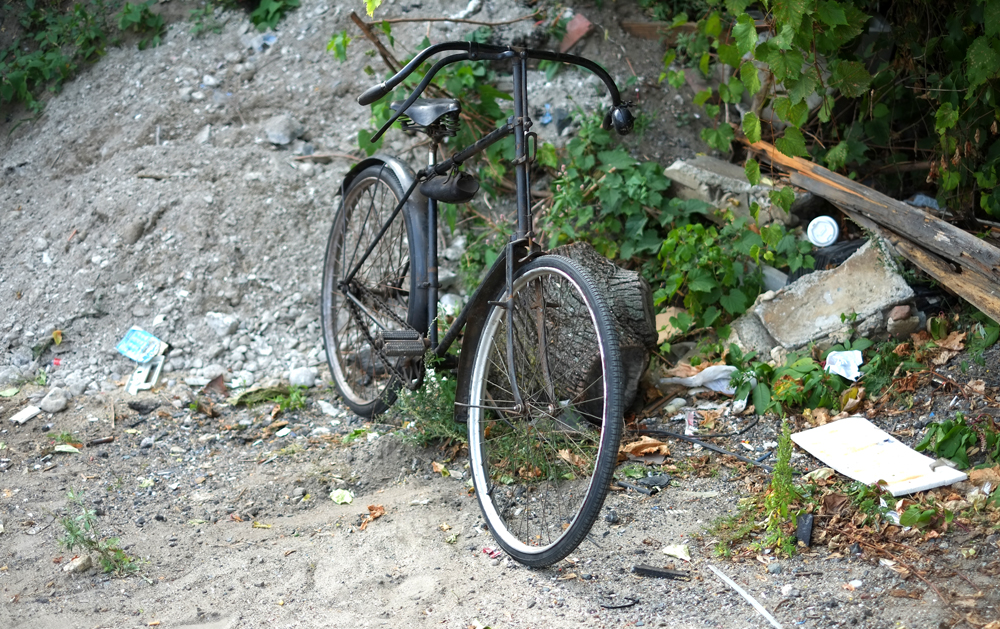
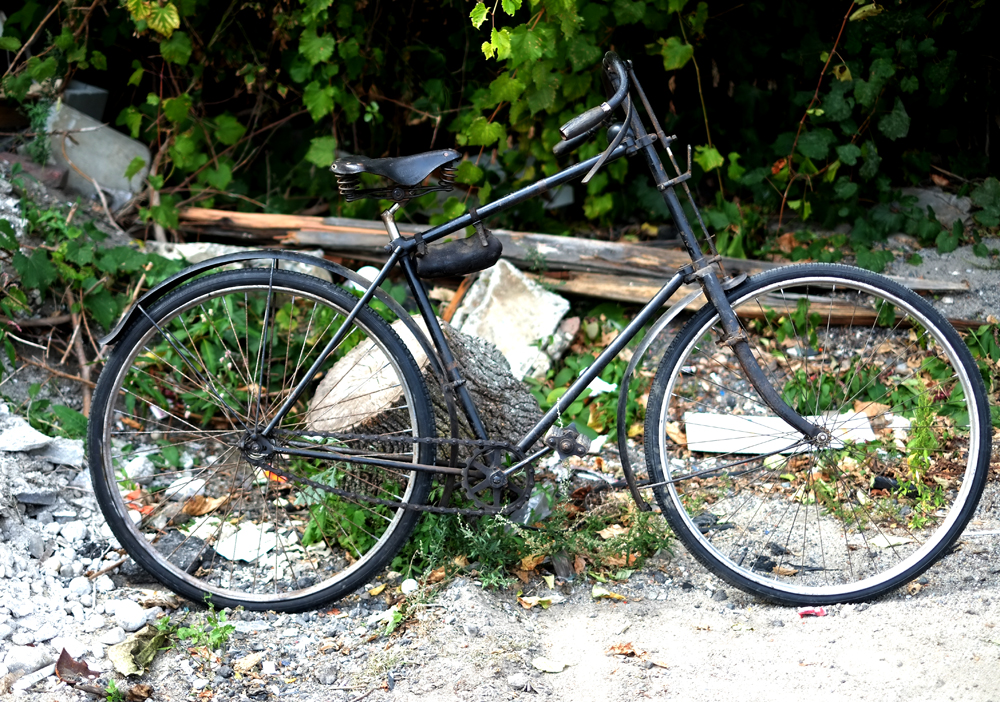

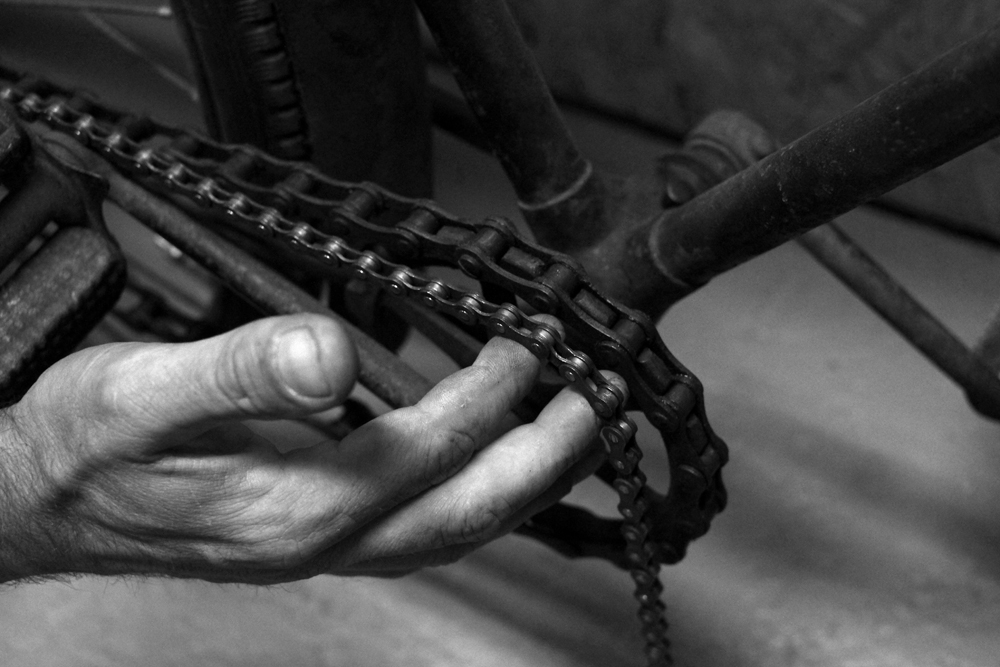
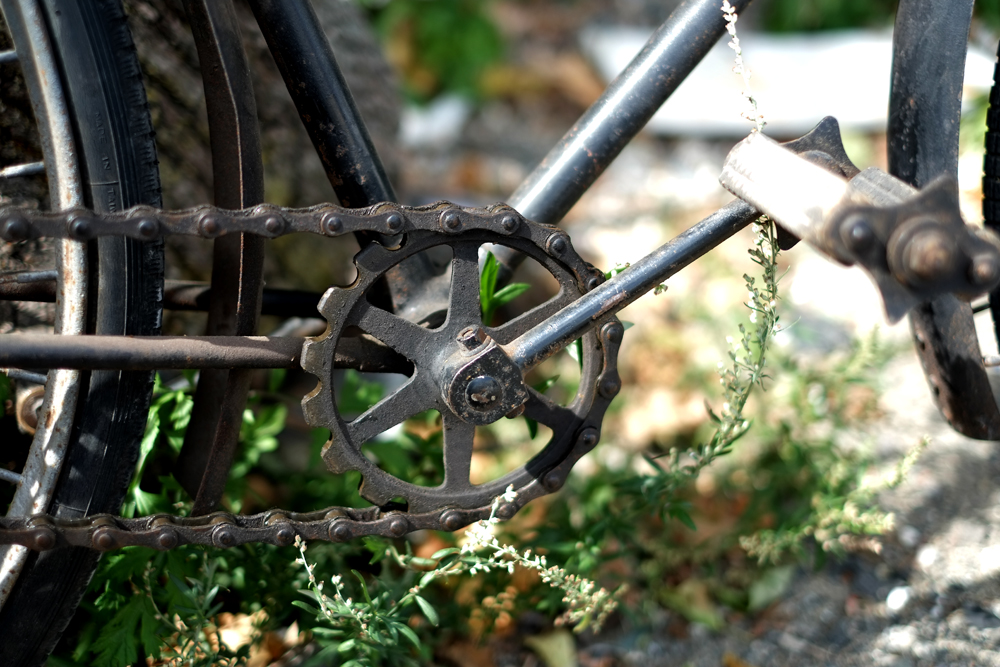
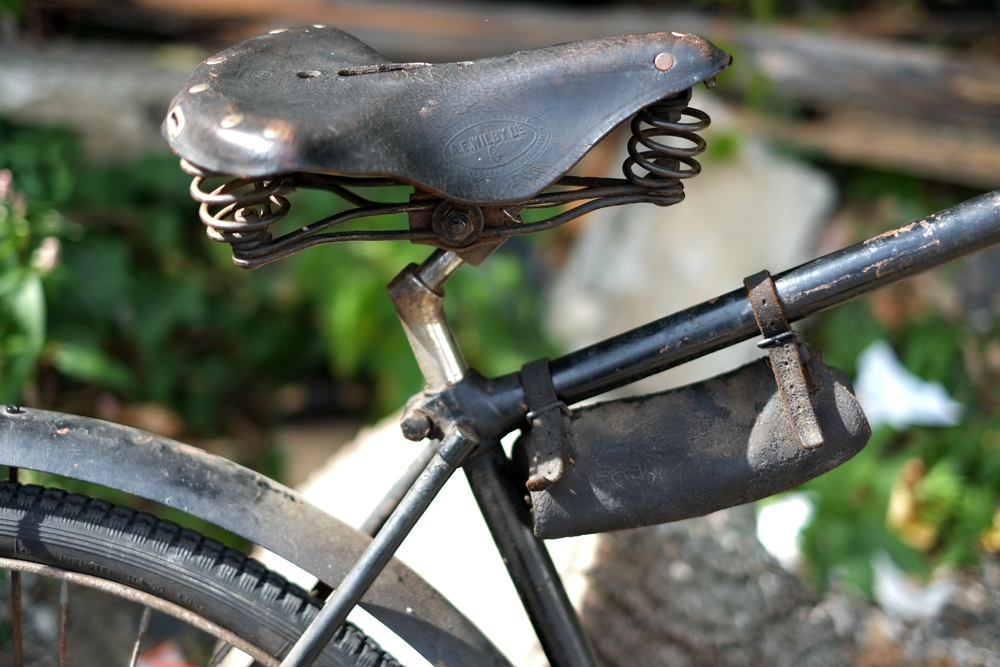
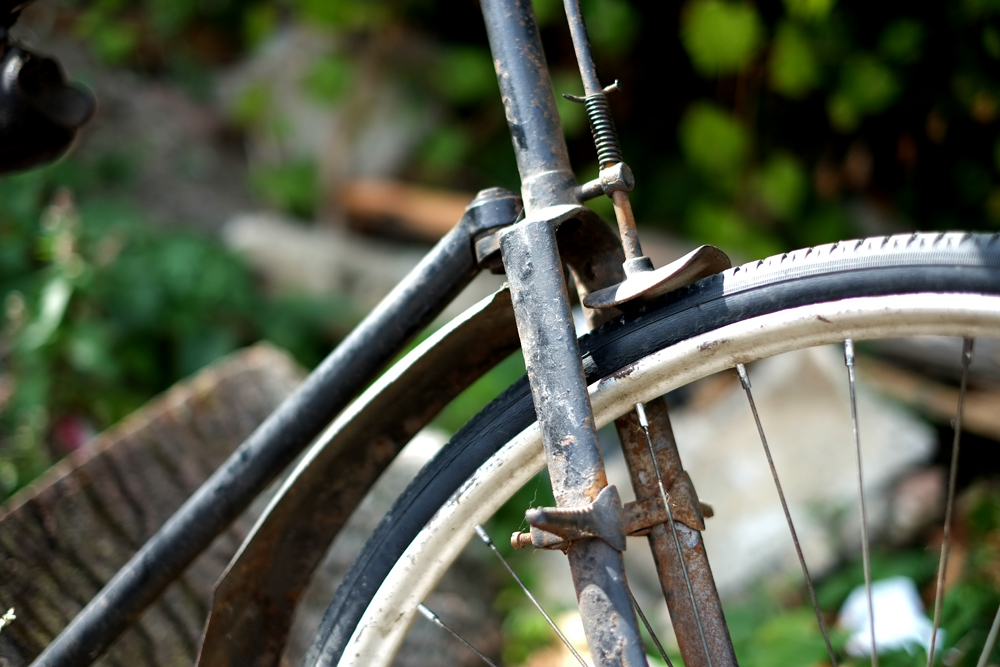
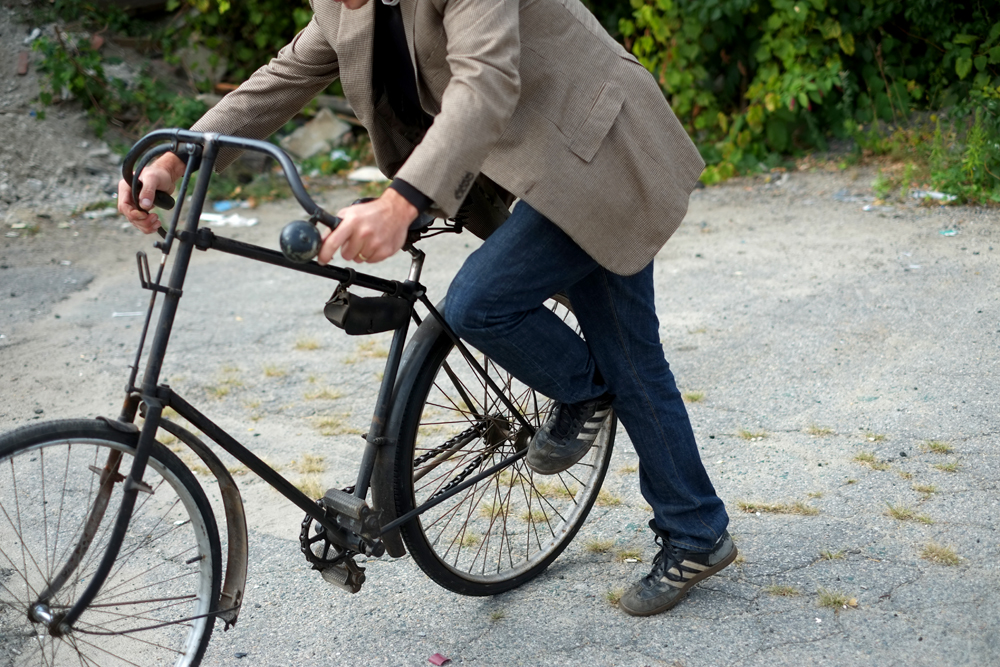

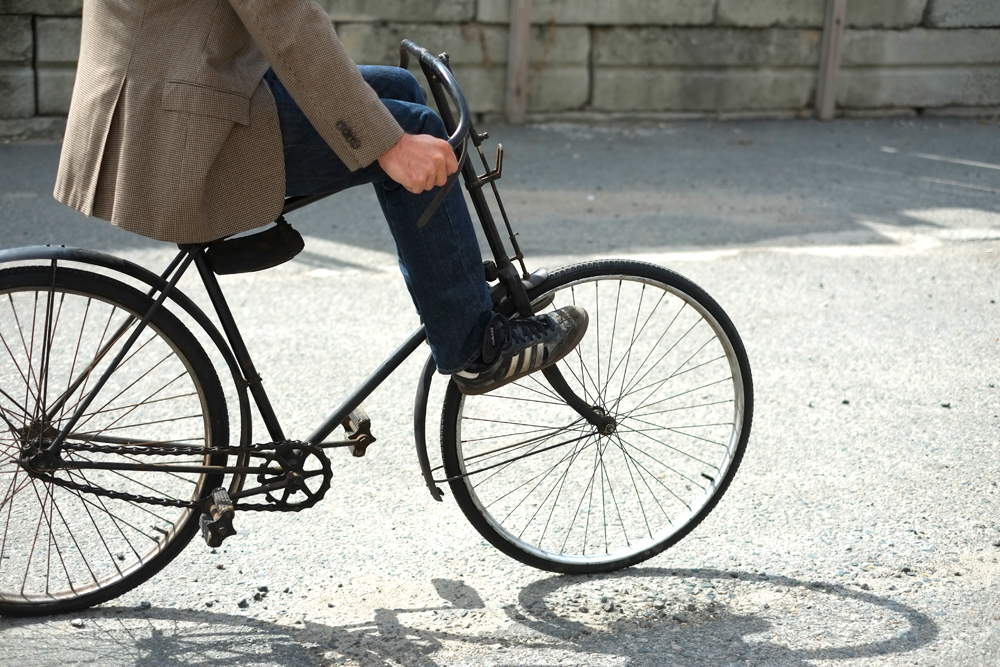
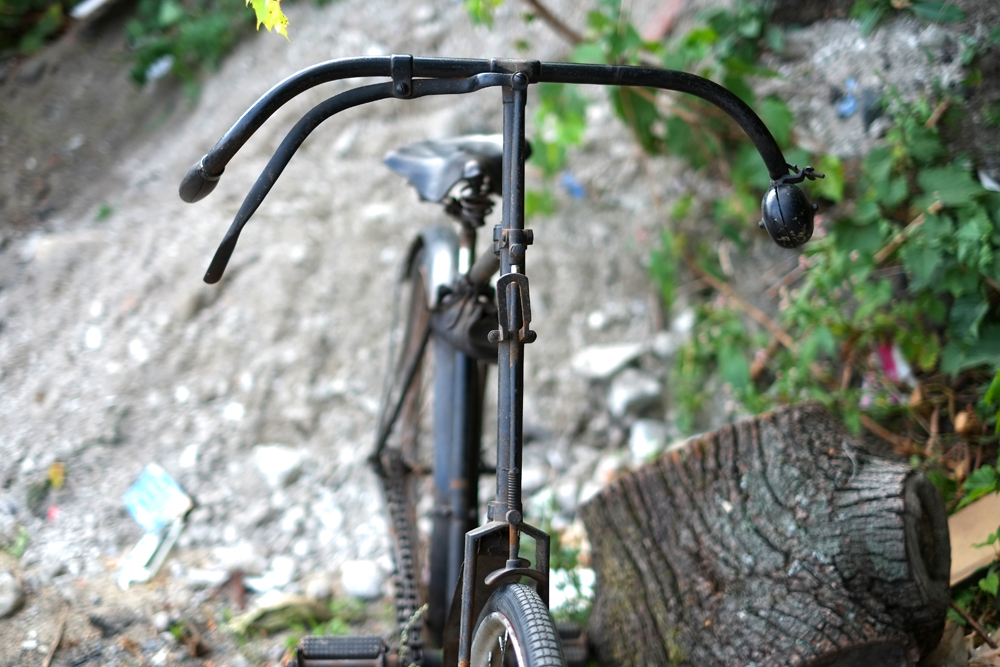

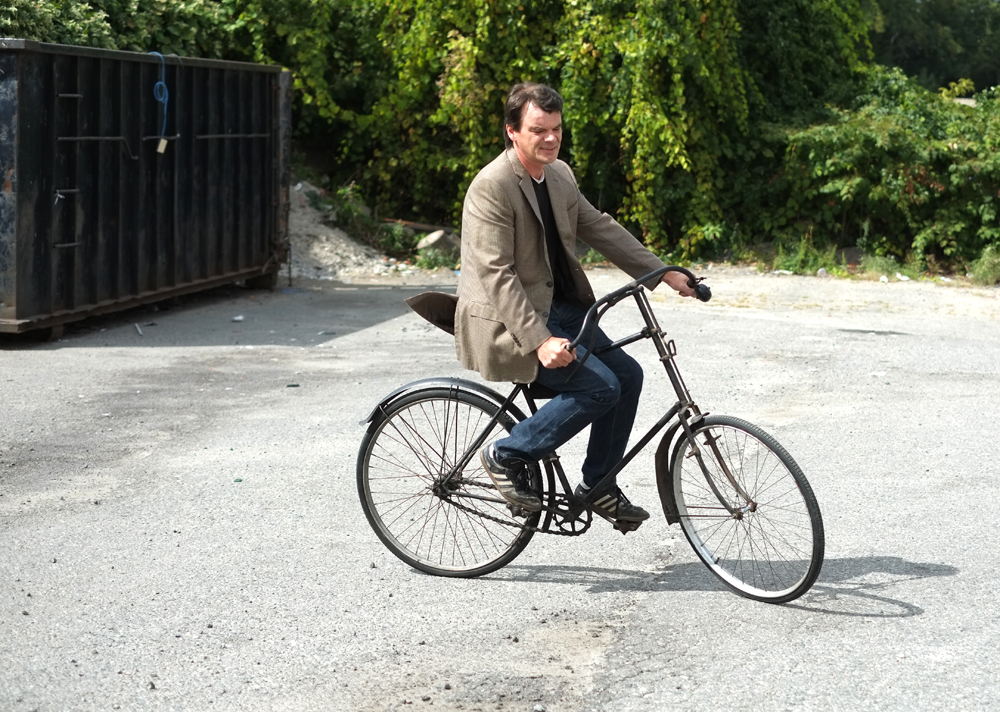
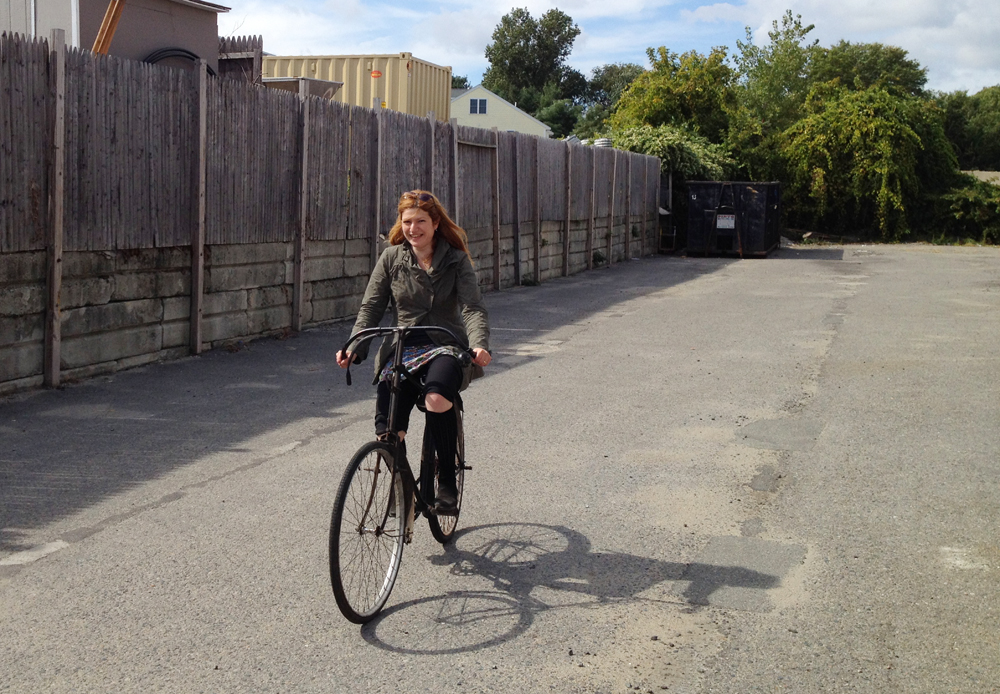
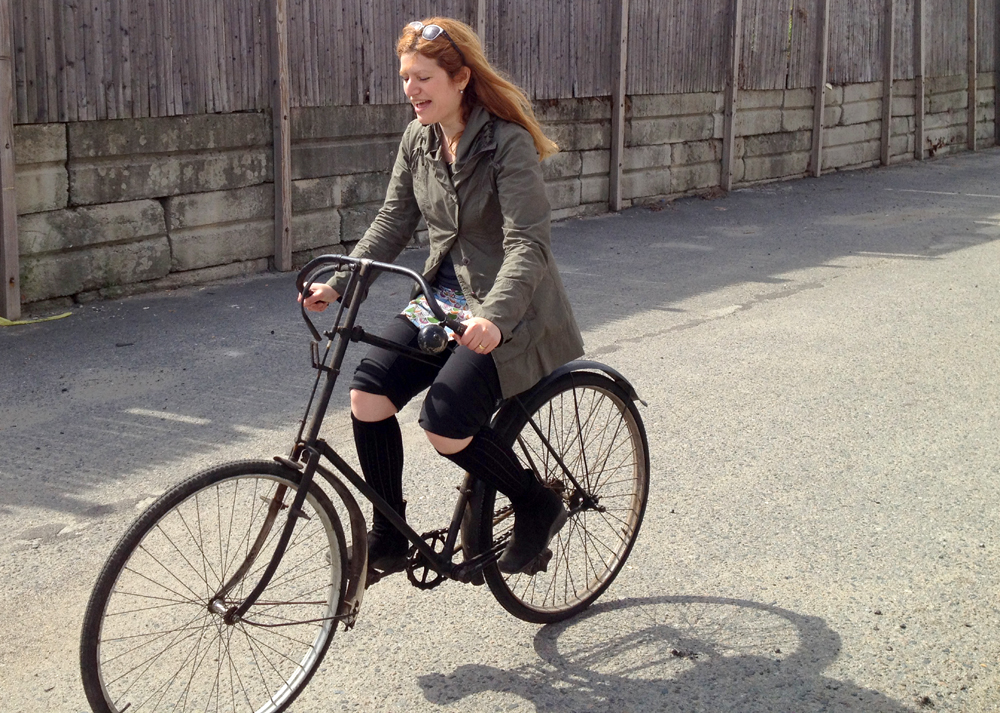
One notices the bar very close to the saddle; something that someone used to modern designs notices on today's 3d world roadsters and omafietses; in all cases combined with a very slack (by modern standards) seat tube angle.
ReplyDeleteIs there a reason for this sort of (by modern standards) weird geometry, or is it (as I've often wondered) simply a holdover from the "pennyfarthing" where the big wheel design simply required the bar to be snugged up against the torso -- there was no other place for it, so to speak?
At any rate, a chain and sprockets as thick as those should last another 100 years easily.
It reminds me of the Murdoch Mysteries episode, where "new fangled bicycle races" are taking place, and the police chase down a suspect on one of these bicycles, through an off-road terrain no less! http://www.imdb.com/title/tt3095642/ (It's a canadian tv show)
ReplyDeleteThat's an interesting mounting method.
ReplyDeleteMy late grandfather (born 1872, died 1959), in the 1890's and 1900's, used to ride a "safety" bicycle to go home to visit his family, about 20 miles distant. This was an improvement on walking there, which he previously did most Saturday afternoons (they worked mornings then), returning on Sunday afternoon.
As he was the manager of a company, he dressed in frock coat and stand-up collar (which he did to the day he died). I am told that he always got aboard by standing with both feet on the mounting pegs, and hopping up on to the saddle. This was necessary for two reasons. Firstly, this prevented any foul-up with the tails of his frock coat; and secondly, it was considered a bit ungentlemanly to fling a leg over the machine as we do today.
Around the time of the First World War, he acquired a motor car, and I think that was the end of his cycling days.
Cycling 20 miles is indeed an improvement on walking that distance! I will try to remember that next time I need to do that for transportation, in a 25mph headwind : )
DeleteI picked up a great book a while back, called Fancy Cycling. This bike kind of reminds me of the bikes you see in there, especially with the pegs designed for easy mounting.
ReplyDelete- nemarra
That's cool. I don't have the cash to buy one, or the talent to fix it, but I'd love to tool around on an antique bicycle.
ReplyDeleteare you...or your long lost twin from picturebooks, perchance?
ReplyDeleteAs I've recently discovered, yes. But that is a long story.
Deletefairy tales normally are...but that was in another country...and besides...
DeleteDid you not ride a penny farthing on your first visit to Ireland?
ReplyDeleteNope, never ridden a Penny farthing. I photographed one at a collector's house though. Took 3 people to help test riders mount it!
Delete"I am still not sure what stature of rider this bicycle was meant to fit"
ReplyDeleteI don't think they were especially bothered about fit at the time this bicycle was made. If you could reach the pedals that was good enough! And with the mounting method your friend demonstrates, you can see there was not any need to stand over the top tube :)
Loved reading this piece, as much as others but I had a sense of how it was going to turn out in the end out so I had a sense of almost wanting to rush to see if I was right but also wanting to take my time and enjoy it.
ReplyDeleteI would like to say a big thank you to those people in the Veteran Cycle Club that have helped me so far with research and pointing me in the right direction. This was one of the bikes I took to the Trexlertown Swap Meet to let people ride and only had a handful take me up on it. Hopefully the picture of you with the broad smile will encourage others to have a go. No charge for a joy ride but if on your way you pass a Dunkin Donuts And were wondering, regular with cream and sugar :-).
Also many thanks for the distance shots and the cropping. Good job I didn't come a cropper on that mounting attempt from the rear axle peg. First time I had attempted that maneuver on this machine!
How remarkable that Nick is making this rare bicycle (and others, right?) available to the public. What an opportunity! Though I have come across a number of antique bikes over the years, all were for display only. I am also pleasantly surprised to see that someone of your height can comfortably ride this bicycle. It does look positively gigantic!
ReplyDeleteNick is planning to eventually open a space that's a cross between a shop and a bicycle lending library. I imagine it will be fantastic.
DeleteThe proportions of the 1892 Rudge make it hard to get a sense of its size. At the high end, the top tube comes up to my chest, but at the low end it just about hits my hips. As far as pedaling alone, even a shorter rider than me (and I'm 5'7") could ride this bike if they're not worried about standover clearance.
Lisa, many thanks. Yes there are others and although the herd is currently small in regard to ride ready, it is growing. Getting them all to the ride ready point might be where the challenges lie ahead but that is all part of the fun.
Delete- Nick
Thank you for another great post. Your writing and pictures adds a bit of joy to my life (which is pretty good to begin with). Sincere appreciation.
ReplyDeleteYou obviously love what you do, which is a necessary element of excellence. But this (relating to your post) lends itself to a question.
Why do we like certain things, such as our mutual appreciation of bicycles of a certain style ? How is our neurobiology wired such that we develop these fixations ?
As I think about this, I realize that I do not know myself., which is somewhat disconcerting.
Well, enough silliness. Off for a ride.....
So many mysteries in this world. Perhaps in a past life we were bicycles. And, if you haven't read it already, this may offer some explanations.
DeleteWhile watching an episode of Downton Abbey with my wife not long ago, I huffed when a messenger boy rode up on a bike that, to me, looked way too modern. In my mind he should have been riding a machine that looked more like this smile-inducing Rudge. And how did I know the messenger boy's bike was too modern? The carbon fiber wheels were a dead giveaway.
ReplyDeleteGlad to know I'm not alone in scrutinising bikes for period-correctness in fillims (that's Irish for "films"). The CF rims do often provide clues, as do disc brakes.
DeleteInteresting. It's pronounced "filims" in parts of Canada as well.
DeleteI look at photos of vegetation, rainbows, head badges and now I see a wedding ring?
ReplyDeleteGood eye, Nick does wear a wedding ring. Sorry gals/boys, the good ones are always taken, eh!
DeleteWow, wow, dream bike! How about chain thickness in mm please, I would like to know!
ReplyDeleteThe width of the chain is 16.8mm, and the length of the link is 36.3mm. I am not sure if there is even such a pitch, it is so much bigger than the inch pitch block chain on my 1896 Humber. Which is also ride ready and truly a dream ride for anyone interested :-)
DeleteI wonder how long then swiveling head tube design was used by Rudge? The mid-1890s Columbia and Pope cycles I've seen had head tubes we would recognize today.
ReplyDeleteWas there anything really different in the steering feel?
All in all, a very cool bike. Nick sounds like a fun co-conspirator.
Nick is offering a wonderful resource!
Many thanks for your kind thoughts. I hope I am and I hope it is a resource that is thought well of. I have also scanned and uploaded for free viewing/download over 200 catalogues and manuals for vintage British bikes on my site. Hopefully another resource that people will find of use.
Delete- Nick
Gorgeous!
ReplyDeleteThat flying mount reminds my of my grandfather (born in 1889) asking how kids these days (in the 50's) could just get on a standing bike and ride away. He was a bike messenger in NYC in 1900 -01. He said that back in those days, they ran along side a bike, put one foot on the edge of the back axle and hopped on. It was decades before I realized that his messeger bike had a fixed gear, and that he had never ridden a bike since about 1902.
ReplyDeleteLeo